#1822
Text
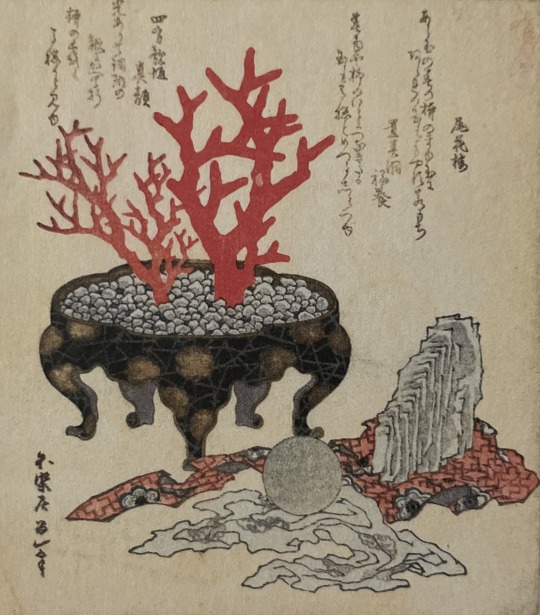
Katsushika Hokusai: ‘Agate’ (1822)
#katsushika hokusai#hokusai#mine#53v3nfrn5#art#japan#coral#japanese#stones#1822#aesthetic#1800s#1800s art#artblr#historical art#woodblock print#japanese woodblock
112 notes
·
View notes
Text
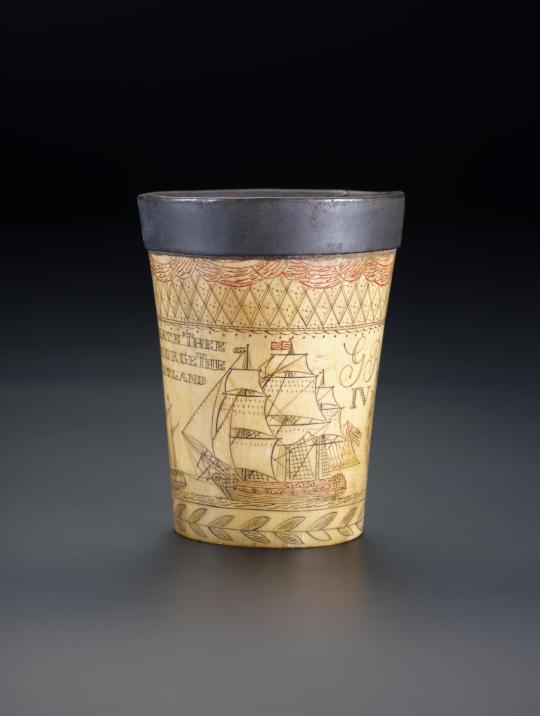


Scrimshawed horn tumbler with depictions of various sailing ships and a steamer and the phrase - 'To Commemorate the Landing of George the Fourth in Scotland', made 1822
88 notes
·
View notes
Photo
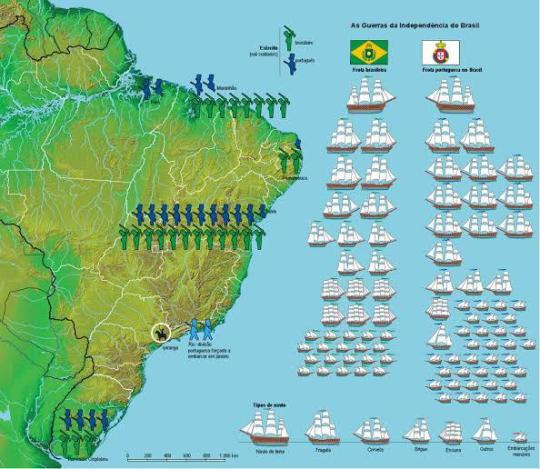
Map of troop deployments and naval strength of both sides at the outbreak of the Brazilian War of Independence, which began September 7th 1822
98 notes
·
View notes
Text
24 Days of La Fayette - Day 2
After beginning with one of my favourite portraits, let us continue with one of La Fayette’s favourite portraits of himself. This one:

Lafayette by Ary Scheffer, 1822-1823 via Wikipedia (12/02/2023)
It was a painted by the Dutch-French artist Ary Scheffer around 1822. The portrait was intended as a commemoration and present for La Fayette final visit to America - his Triumphant Tour in 1824/25. This was not the only work done by Scheffer for La Fayette, neither prior nor after the Tour.
The portrait accompanied him on this tour and La Fayette and Scheffer gifted it to the House of Representatives in 1824 when La Fayette was the first foreign visitor to address both the Senate and the House of Representatives in a joint meeting. To this day, it still hangs in the House Chamber (it was first displayed in the Capital Rotunda). The portrait was very well received by the people of the day. The newspapers wrote how close it resembled General La Fayette and no less than 27 state-banks featured the portrait on their currency. Many artists wanted to paint La Fayette during this momentous event but he neither had the time, nor the patience to sit for every single one of them. Instead, they copied this painting and made numerous engravings and prints. That is the reason why you see a number of copies and variations of this painting on the internet.
There is also an hilarious anecdote connected to this painting.
When Ary Scheffer was painting his portrait, someone asked the General how he was posed. He said:
“I am taking a walk - my hat and cane in my hand - like this.”
“And the other hand?”
“It is in my pocket, which is much better than having it in somebody else’s”
American friends of Lafayette, Gazette of the American Friends of Lafayette, No. 03, p. 3, May 1944. (12/02/2023)
#24 days of la fayette#marquis de lafayette#la fayette#french history#american history#history#art#ary scheffer#tour of 1824/1825#1822#1823
26 notes
·
View notes
Text

Journal des Dames et des Modes, Costume Parisien, 25 novembre 1822, (2112): Chapeau de velours plein orné de marabouts. Robe de gros de Naples garnie de biais de gaze lisse. Echarpe de barèges-cachemire. Souliers de satin. Collection of the Rijksmuseum, Netherlands
Standing woman dressed in a dress of 'gros de Naples' decorated with bias binding of 'gaze lisse'. On the head a canopy hat of plain velvet decorated with marabou feathers. Additional accessories: 'barèges-cachemire' scarf, handkerchief, satin shoes. Print from the fashion magazine Journal des Dames et des Modes, published by Pierre de la Mésangère, Paris, 1797-1839.
#Journal des Dames et des Modes#19th century#1820s#1822#on this day#November 25#periodical#fashion#fashion plate#color#description#rijksmuseum#dress#Mésangère
23 notes
·
View notes
Text

John James Chalon, The Cemetery of Pere Lachaise, 1822.
#john james chalon#the cemetery of pere lachaise#1822#18th century art#dark art#skeleton#funeral art#gothic art#bats#death#swiss artist
12 notes
·
View notes
Text
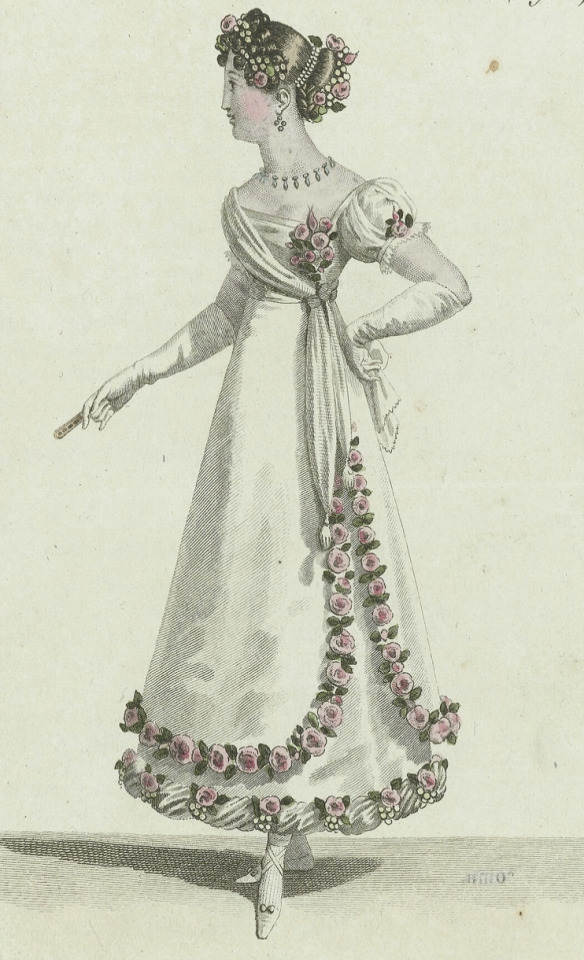
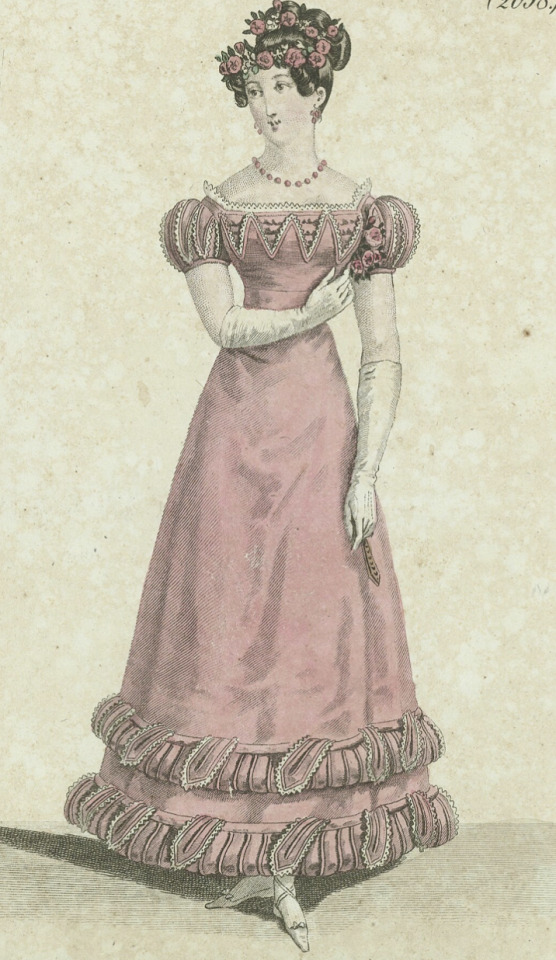
#historical fashion polls#fashion plate#fashion poll#historical dress#historical fashion#dress history#fashion history#polls#tumblr polls#19th century#19th century dress#19th century fashion#early 19th century#1820s fashion#1820s#1821#1822
14 notes
·
View notes
Text

Bust of Beatrice, Antonio Canova, 1819-22
#bust of beatrice#Antonio canova#canova#1819#1820#1821#1822#1810s#1820s#1800s#19th century#neoclassical#sculpture#statue#art
48 notes
·
View notes
Text
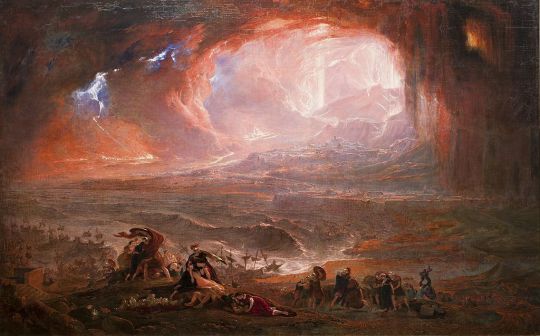
𝘿𝙚𝙨𝙩𝙧𝙪𝙘𝙘𝙞ó𝙣 𝙙𝙚 𝙋𝙤𝙢𝙥𝙚𝙮𝙖 𝙮 𝙃𝙚𝙧𝙘𝙪𝙡𝙖𝙣𝙤 (𝙅𝙤𝙝𝙣 𝙈𝙖𝙧𝙩𝙞𝙣, 1822)
#art#romanticism#painting#the destruction of pompei and herculaneum#john martin#19th century#1822#pompeii#ancient rome#artwork#romanticismo#arte#destrucción de pompeya y herculano#siglo xix#pompeya#antigua roma
9 notes
·
View notes
Text
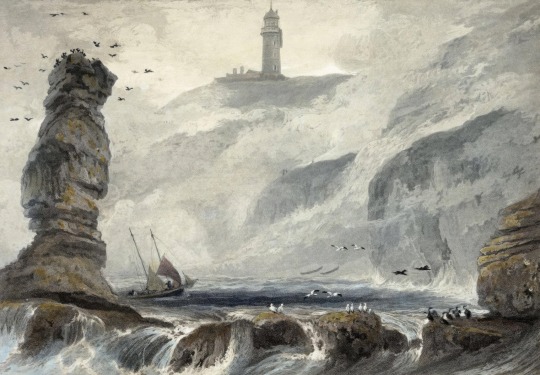
Lighthouse at Flamborough Head (William Daniell, 1822)
14 notes
·
View notes
Photo
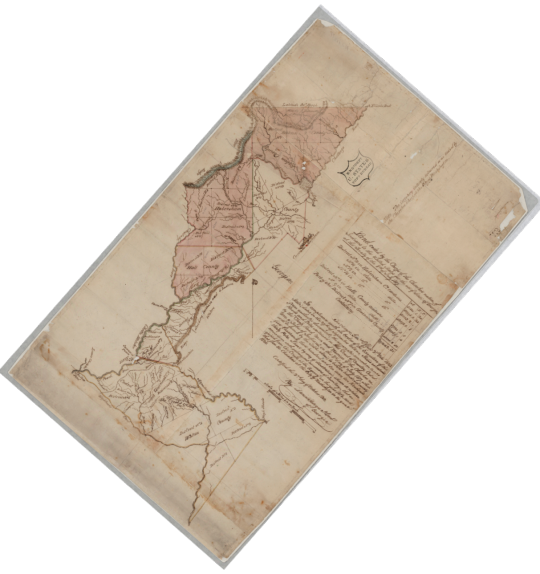
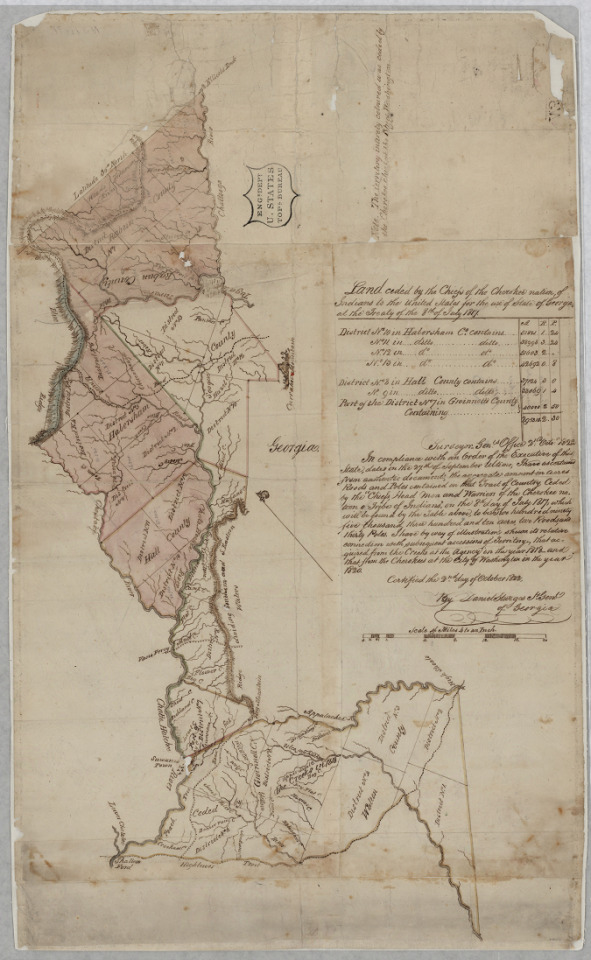
Map showing land ceded by the Cherokee and (Muscogee) Creek Nations to Georgia in 1817, 1818, and 1820, 10/2/1822.
File Unit: Georgia, 1784 - 1890
Series: Civil Works Map File, 1818 - 1947
Record Group 77: Records of the Office of the Chief of Engineers, 1789 - 1999
Image description: A map, tilted diagonally so that north points up. It shows the area of Georgia from, as far as I can tell, Gainesville to Clayton. Some of the map is shaded red and some is unshaded. The Blue Ridge mountains are blue.
Transcription:
[this is the same map as previously described.]
[sideways] Note: The territory intirety coloured was ceded by the Cherokee chiefs at the City of Washington [end sideways]
Land ceded by the Chiefs of the Cherokee nation of Indians to the United States for the use of the State of Georgia, at the Treaty of the 8th of July 1817.
[table contains name of district, then number of Acres, Roods, and Poles]
District No. 10 in Habersham Co. contains 51721 | 1 | 24
No 11. in ditto ditto 38998 | 3 | 24
No. 12 in do do 51603 | 2| "
No. 13 in do do 42692 | 0 | 8
District No. 8 in Hall County contains 37124 | 3 | 0
No. 9 in ditto ditto 33069 | 1 | 4
Part of the District No. 7 in Givinnette County Containing 40000 | 2 | 50
[double line indicating total]
295310 | 2 | 30
Surveyor Gen.ls Office 2nd Octo.r 1820
In compliance with an Order of the Executive of this State, dated on the 27th of September Ultimo; I have ascertained from authentic documents, the aggregate amount in Acres Roods and Poles contained in that Tract of Country Ceded by the "Chiefs, Head Men and Warriors of the Cherokee nation or Tribe or Indians," on the 8th day of July 1817, which will be found by the Table above, to be Two hundred ninety five thousand, three hundred and ten acres, two Roods, and thirty Poles. I have by way of illustration shown its relative connection with subsequent accessions of Territory, that acquired from the Creeks at the Agency in the year 1818 and that from the Cherokees at the City of Washington in the year 1820.
Certified the 2nd day of October 1822,
By Daniel Sturges Sv. Genl of Georgia
#archivesgov#October 2#1822#1800s#Native American history#American Indian history#Indigenous American history#Cherokee Nation#Muscogee Creek Nation#Georgia#land cessions#Indian Removal#Trail of Tears
48 notes
·
View notes
Text
The Mummy Wreck
This is what you might call the wreck of the Gottfried when it sank on 12 March 1822 with ancient Egyptian artefacts between Cuxhaven and the west of the island of Trischen near the mouth of the river Eider.
The Gottfried was a Danish-flagged galleass launched in 1815. She was about 20m long and had two masts. Her captain was Heinrich Jacob Riesbeck and with him sailed a crew of 8. At the time of her sinking, she was carrying 97 boxes of Egyptian art treasures, which the Prussian nobleman Baron Heinrich Menu von Minutoli had acquired in Egypt for King Frederick William III in order to lay the foundations for Prussia's own Egyptian collection. Minutoli had spared nothing in his purchases. He had acquired mummies, animal mummies, altars, vessels, figures of gods, a door frame and papyri. Mehmed Ali Pasha, governor of the Ottoman province of Egypt, had even added an Arabian marquee as a gift to the baron. In addition, there was the top of a pyramid and a sarcophagus of red granite weighing several tons.

The loss of the Gottfried, by unknown (x)
But now the Gottfried was caught in a hurricane and the heavy cargo seemed to have been her undoing, for it smashed through the hull and sank the ship. All those present had no chance to save themselves and went down with the valuables. At first no one knew that the Gottfried had sunk, but when the first mummies were gradually washed up on the beach, they knew that something had happened. And immediately, dike count Georg Wilhelm Schmeelke, mayor in the service of the Duke of Bremen and Verden, began to note down what the sea washed up on the left bank of the Elbe between Cuxhaven and Balje in the coming days: an ostrich egg, rams' horns, mummified fish, corals and two boxes with various books, letters, maps and diaries. The ceremonial tent also made it to the Elbe beach completely torn to pieces - as did seven sarcophagi with their mummies. The discovery caused great horror, as the plague was raging in Egypt at the time. The dead were hastily buried in the sand on the shore.

The gilded head of a male mummy (x)
But the ship had been insured and now owed Minutoli 27,000 marks, and in order to compensate for this high loss to some extent, everything that had been washed up on the beach was gathered together and even the dead had to be dug up again. These finds were then auctioned off. Much to the delight of Hamburg's merchants, because now they too could hold their own mummy parties and not have to look enviously to London. In the course of time, a few pieces came to various museums, including the gilded head of a male mummy. In 2003, a small box with a linen bandage and a mummy's curl was added, which had been in a magazine in the Museum für Kunst und Gewerbe in Hamburg.
The rest is still missing, as is the wreck of the Gottfried. It has probably long since disappeared, but the sarcophagus and the pyramid top are probably still there.
102 notes
·
View notes
Photo

Today Brazil celebrated its bicentenary as an independent country. This is the map of the country in 1822, in the day of the independence.
150 notes
·
View notes
Text

Green Taffeta Child’s Dress, 1820-1825, English.
MFA Boston.
#green#child#extant garments#mfa boston#silk#19th century#dress#England#English#British#Britain#1820#1821#1822#1823#1824#1825#1820s#1820s England#1820s child#1820s child’s dress#1820s britain#taffeta
5 notes
·
View notes
Photo

Journal des Dames et des Modes, editie Frankfurt 19 Mai 1822, Costumes Parisiens (21). Collection of the Rijksmuseum, Netherlands
According to the accompanying text (p. 575): Figs. 1: Paille de riz hat decorated with a gauze ribbon. Spencer 'and Levantine', topped with Blonde (bobbin lace). Muslin dress with embroidered ruffles. Gaze cashmere scarf. Yellow gloves and black shoes. Fig. 2: Mesh hat decorated with 'rouleaux' of satin, lilacs and primroses. Spencer made of velvet, decorated with gold-colored braid. Dress of cotton percale (percale) with 'remplis' and strips of muslin. White gloves. Lilac shoes. The print is part of the fashion magazine Journal des Dames et des Modes, published in Frankfurt as a copy of the French edition by Pierre de la Mésangère, Paris, 1797-1839.
#Journal des Dames et des Modes#19th century#1820s#1822#on this day#May 19#periodical#fashion#fashion plate#color#rijksmuseum#Mésangère#spencer#percale#collar#description
75 notes
·
View notes
Text
Nicholas Fish to Elizabeth Hamilton, [March 22, 1822]



22 March, 1822
Dear Madam,
The circumstances which I had the honor of communicating to you some time since in conversation, relative to the introduction of French troops into this country during our revolutionary war, I fully intended long since to have stated to you in writing, but the disordered and painful state of one of my eyes, which for several months, occasioned by confinement to a dark room, has till now prevent me from doing. You will perceive Madam in the statement which I now have the honor to transmit on that Subject, that I have introduced some particulars, which though not immediately connected with the principal fact, will tend to show the existence of a long established friendship and intimacy between General Hamilton and myself and the relative situation in which we were placed, and thereby be explanation of confidential communications made to me by him.
In the campaign of 1781 Genl. Hamilton, after he had retired from the family of Genl. Washington, was appointed by him to the command of a select corps of Infantry, of which had the honor of being next in command, this Corps was composed of the light companies of the New-York line, and two light companies of the Connecticut line, and thus organized marched with the main army from the banks of the Hudson River to Virginia, where the Marquis La Fayette was then in command, with a body of light troops, previously detached from the army—On General Washington's arrival in Virginia with the combined army, (American & French) La Fayette, with his troops joined the army, & Hamilton's Corps was annexed to the Marquis' command—the French fleet under the command of Count de Grasse having arrived in the Chesapeak to co-operate with the combined army, the siege of York-town commenced; during which, and throughout the whole of that Campaign, I had the happiness and good fortune of being the mess mate of Genl. Hamilton, and of occupying with him the same tent—this added to our previous intimacy and uninterrupted friendship from the year 1775, when he was a student of King's College, and where with a few others we had formed a weekly club, for improving ourselves in debating & public speaking, naturally led occasionally to confidential and unreserved conversations; in one of these, the General speaking of the Marquis La Fayette, said, The United States are under infinite obligations to him beyond what is known, not only for his valor & good conduct as Major Genl. In our army, but for his good offices & influences in our behalf with the court of France—the French army now here, co-operating with us, would not have been in this Country, but through his means, he then said, that for some considerable time previous to the arrival of the French army under Count Rochambeau; he Genl. Hamilton had conceived the idea, and had weighed in his own mind the propriety of such a measure, and having satisfied himself on that subject, he had suggested the idea to the Marquis La Fayette, expressing to him at the same time, not only the powerful effect that would be produced in our army, and the Country generally, by the introduction of a small military force from France, to cooperate with us, but the increased effect that would result, should the Marquis himself be appointed to the chief command—This project met a welcome reception, and after some remarks, as to the details of the plan, the Marquis with all the zeal and promptitude which characterized him, addressed the French Government, and their Ambassador here, on the subject, urging the advantages which would result to both nations, from having a French military force in this Country; this proposition was immediately patronized and inforced by the family & connections of the Marquis, who were then in power and great influence in France, and accordingly adopted by that Government.
An army under County Rochambeau was sent to this Country: a fleet under County de Grasse, was also sent, and the capture of Lord Cornwallis' army which terminated the war, and sealed our Independence, was the consequence—As the idea of introducing into this country, a small auxiliary army from France, first presented itself to the mind of Genl. Hamilton, as avowed by him to me, and possibly not communicated by him to any other friend, I deem it a duty incumbent on me, and a tribute due to his memory, that the knowledge of that fact should not be lost, but be preserved and recorded as an additional evidence of his brilliancy of imagination and preeminent services to his Country.
When the siege of York town had commenced, our first parallel line was thrown up, it became evident, that the two Redoubts which Lord Cornwallis had constructed in front of the town, would prolong the siege, until they could be allowed by our cannon, or taken by storm; the former of these methods would probably have been preferred and preserved in with confidence of ultimate success, had not the French Admiral announced his wish to return with his fleet to the West Indies, intimating that circumstances would compel him to depart in a few days—thus circumstanced Genl. Washington and induced to change his plan of regular approaches, for the more expeditious one of storming those works-to this end an arrangement was made that one Redoubt should be attacked by a column of American light Infantry, and the other by a column of French Grenadiers. The command of the American Infantry consisting of two Battalions one commanded by Col. Gemat, the other by myself—was given to Genl. Hamilton, and a signal from our grand battery answered by a correspondent signal from the French battery, put the two columns of attack immediately in motion.
The American Infantry animated by the address and example of their leader, marched to the attack, with Muskets unloaded and Bayonets fixed relying on their Bayonets alone for success; they soon arrived at the counterscarp, under a heavy and constant fire from the redoubt, which they bravely sustained, and surmounting all difficulties and impediments of abattis, ditch and palisade mounted the parapet and took possession of the work together with those who had defended it, and Major Campbell the commanding Officer; all this was effected agreeably to previous arrangement made by Genl. Hamilton; and his troops regularly formed within the Redoubt and order completely restored, while the other column, whose mode of attack was different, were yet engaged in the conflict.
I have the honor to be
With great respect
Dear Madam
Your friend & humble servant
Nichs. Fish
#hamilton correspondence#fish correspondence#elizabeth hamilton#elizabeth schuyler#nicholas fish#1822
8 notes
·
View notes